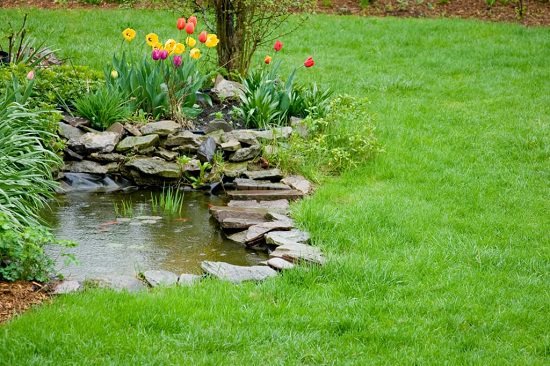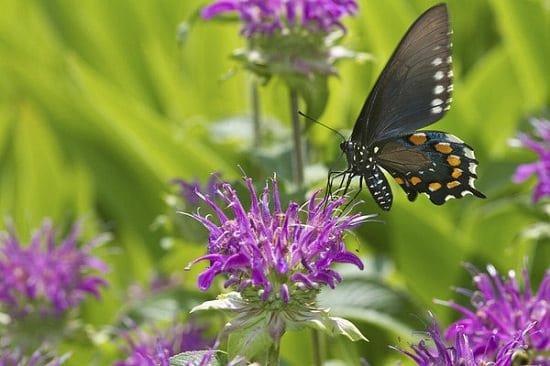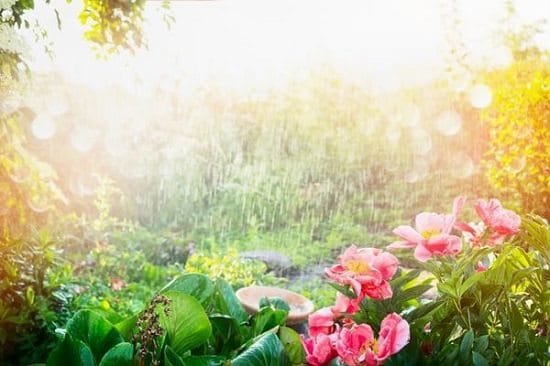Learn How to Make a Rain Garden in this informative post! It’s a creative and beautiful way to protect the environment and grow plants.
Making a rain garden is the best way to save the natural resourses and grow plants in a favorable way. Here’s all the information that will help you on How to Make a Rain Garden!
Here are Vertical DIY Rain Gutter Garden Ideas For Small Spaces
What is a Rain Garden?
Before making a rain garden, it is important to understand what it is actually. A rain garden is a straightforward idea that has become a hot new trend for landscapes.
Outdoor landscape areas that have been left undeveloped due to excessive rain run-off or standing water can be transformed into a beautiful rain garden with the right plant choices. You can also make a rain garden design based on the available space in your yard.
Check out these Rainbow Vertical Garden Ideas
Rain Garden Benefits
Selecting the plants for rain garden and manipulating the soil in a low-lying area will allow the area to receive and absorb excess rainwater. Since the excess rainwater stops in the rain garden, it prevents soil erosion and garden chemicals from making their way into nearby streams and lakes.
Creating a rain garden in a low-lying area of your landscape will also eliminate standing water and prevent mosquitoes from breeding. The additional beauty of a rain garden will also add value to your property. There are many rain garden ideas that you can look for on the internet.
Here are DIY Rain Chain Ideas
How to Make a Rain Garden?
1. Choose the Location
For DIY rain garden, choose a location that is prone to have excess rainwater standing in it after the rest of the landscape gets dried after heavy rain.
If you do not have a location in your landscape like that, then making a rain garden in a location that is near a paved driveway, sidewalk, or downspout where a lot of rain run-off passes through.
Any location where rainwater tends to run or collect is an ideal spot for creating a rain garden.
2. Manipulate the Growing Medium
After the location has been chosen, comes the rain garden design. Decide on the size and shape of the rain garden. Next, remove all the soil to a depth of about two feet. Mix an equal amount of compost into the removed soil.
Gypsum, well-rotted animal manure, shredded leaves, hay, or other organic material, can be used in place of (or combined with) compost.
The soil must be manipulated with organic amendments to make it extremely loose so it will be able to quickly absorb and hold onto the excess rainwater that will be headed toward the newly created garden.
The organic material will also increase the fertility of the soil and keep the plants fed and healthy. If you will be using commercial fertilizer, now is the time to mix it into the soil.
Here are Effective Homemade Lawn Fertilizers That Are Safe From Hazardous Chemicals
Place the amended soil back into the area where it was removed, making it deeper around the edges than in the center. Taper the soil towards the center, making a depression about six inches deep in the middle.
Excess rainwater run-off will collect in the middle of the soil depression and gradually be absorbed into the soil, watering the rain garden flowers and helping to prevent landscape flooding.
3. Rain Garden Plants
The best plants for rain garden are native ones that thrive in your specific location. Native plants can absorb large amounts of water yet can tolerate dry soil between rains. You can also plant them in the backyard rain garden.
For example, a southern rain garden should include a native Crepe Myrtle bush. These hardy, colorful bushes can quickly absorb a tremendous amount of water, yet, they are drought-tolerant. Crepe Myrtles can survive weeks of rain followed by weeks of drought, making them an ideal rain garden plant choice.
A tall native bush or plant can be planted in the center to camouflage the lower middle of the rain garden. Plant tall in the middle, then taper the plant heights towards the outer edge, and no one but you will know the center is six inches lower than the outer edge.
A mixture of native perennial flowers, shrubs, and trees will produce deep roots in your rain garden that will help keep the soil loose to aid in rainwater absorption.
Keep the sun exposure of the rain garden location in mind when selecting plants. It’s important to know whether the area is shady, partially shaded, or has full sun; you will have to choose plants accordingly.
4. Wildlife Visitors
Another important factor while making a rain garden is to bring wildlife to your landscape, which is as enjoyable to look at as blooming flowers.
Coneflowers, bee balm, cardinal flower, and blazing star are some of the colorful perennial flowers that will attract birds and butterflies to a water garden. These plants, along with butterfly weed, hydrangea, winterberry, and bottlebrush grass, grow best in full sun.
For a shady backyard rain garden, choose sweet williams, jack-in-the-pulpit, asters, goatsbeard, ostrich fern, or wild columbine.
These beautiful blooming plants will attract and feed pollinators that will help keep all the plants in your landscape producing abundantly while providing you with an interesting wildlife show. It is one of the best rain garden ideas you must implement.
Check out Ways to Encourage Wildlife into your Garden here
5. Environmental Benefits
Creating a DIY rain garden does more than provide landscape beauty and wildlife food; it also offers environmental benefits. Every path polluted rainwater run-off leaves traces of chemicals and pollutants behind that cause harm to natural ecosystems and micro-cultures that live beneath the soil.
A rain garden will catch the water and filter it through the soil and plant roots to remove harmful toxins and provide a cleaner environment within your landscape.






